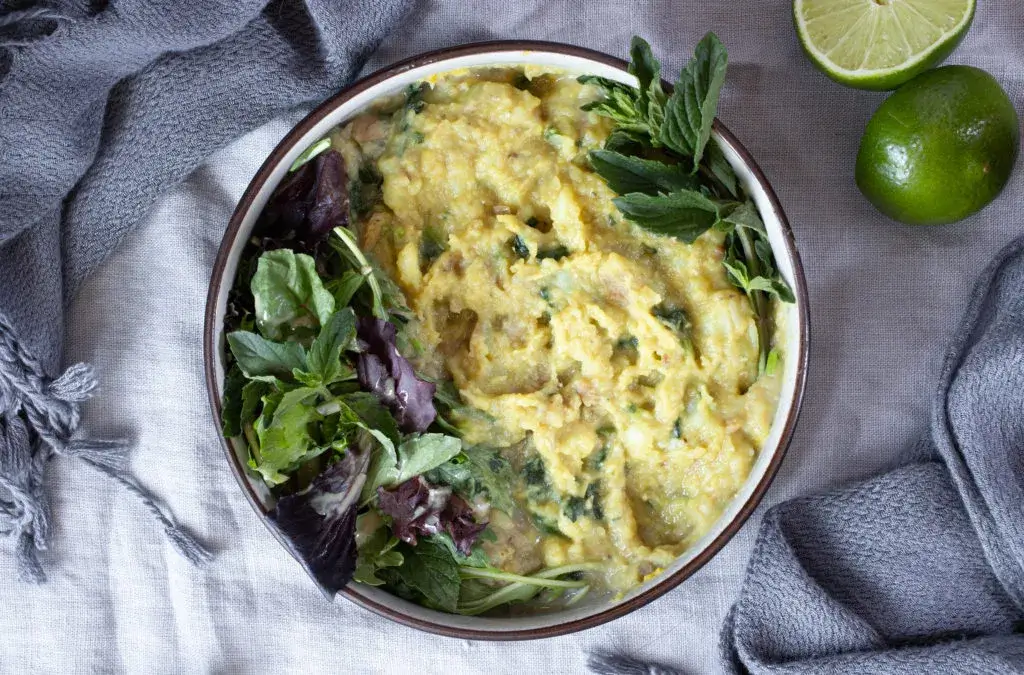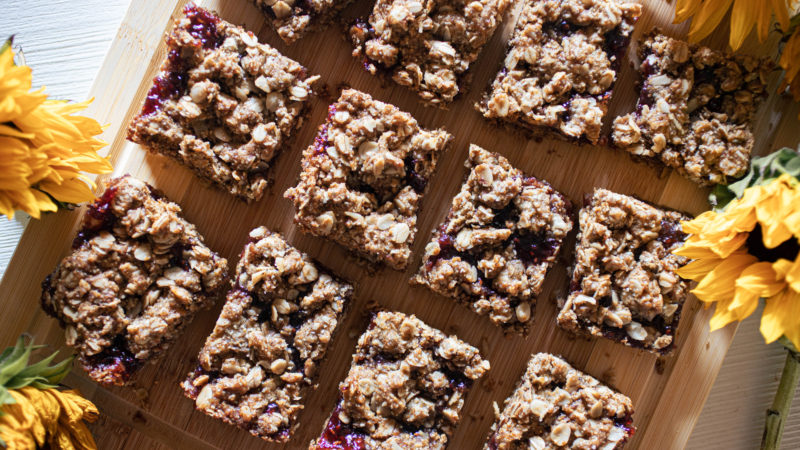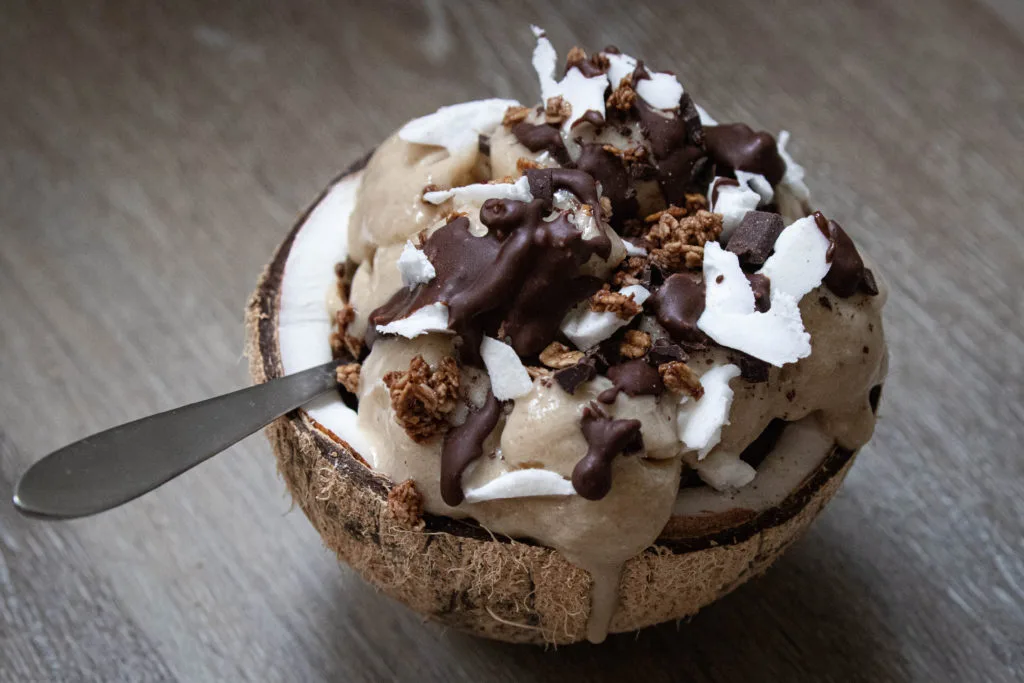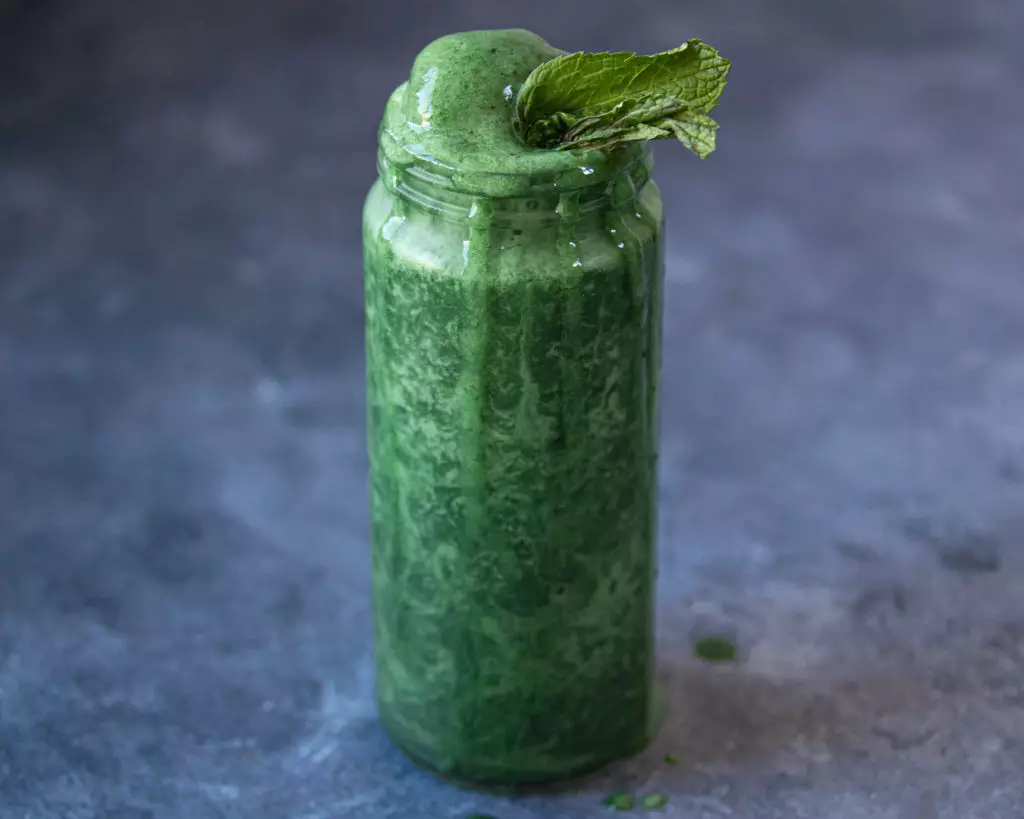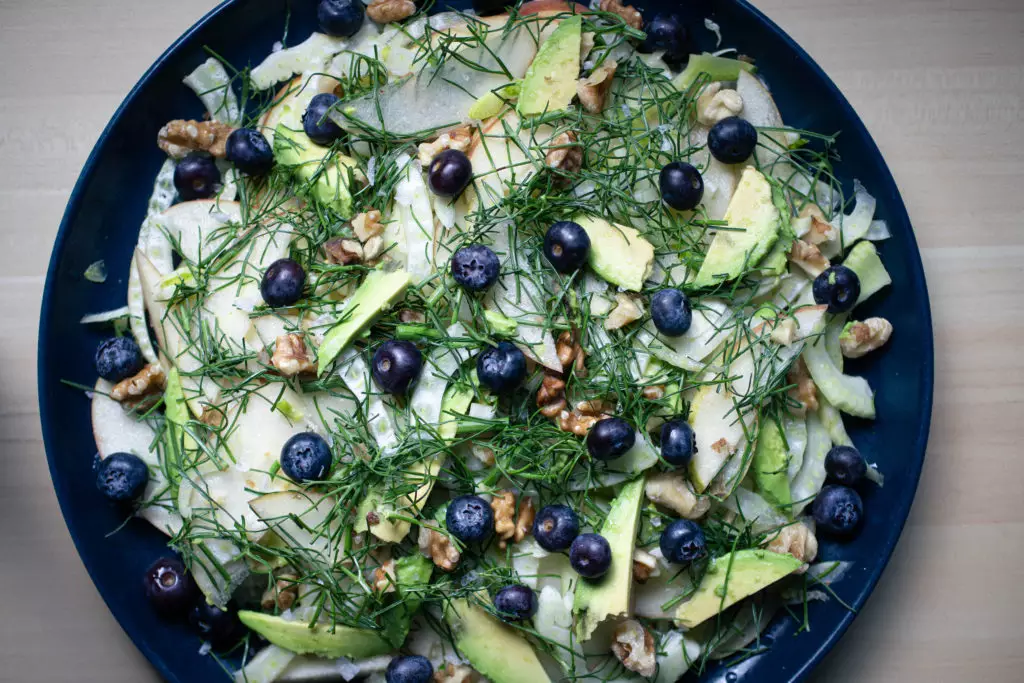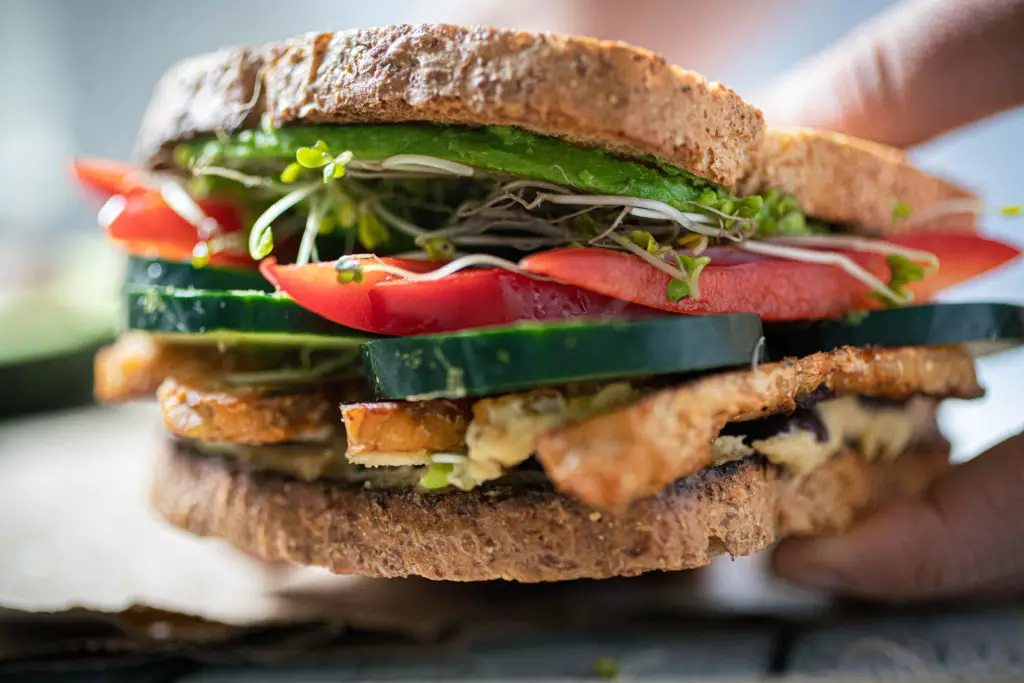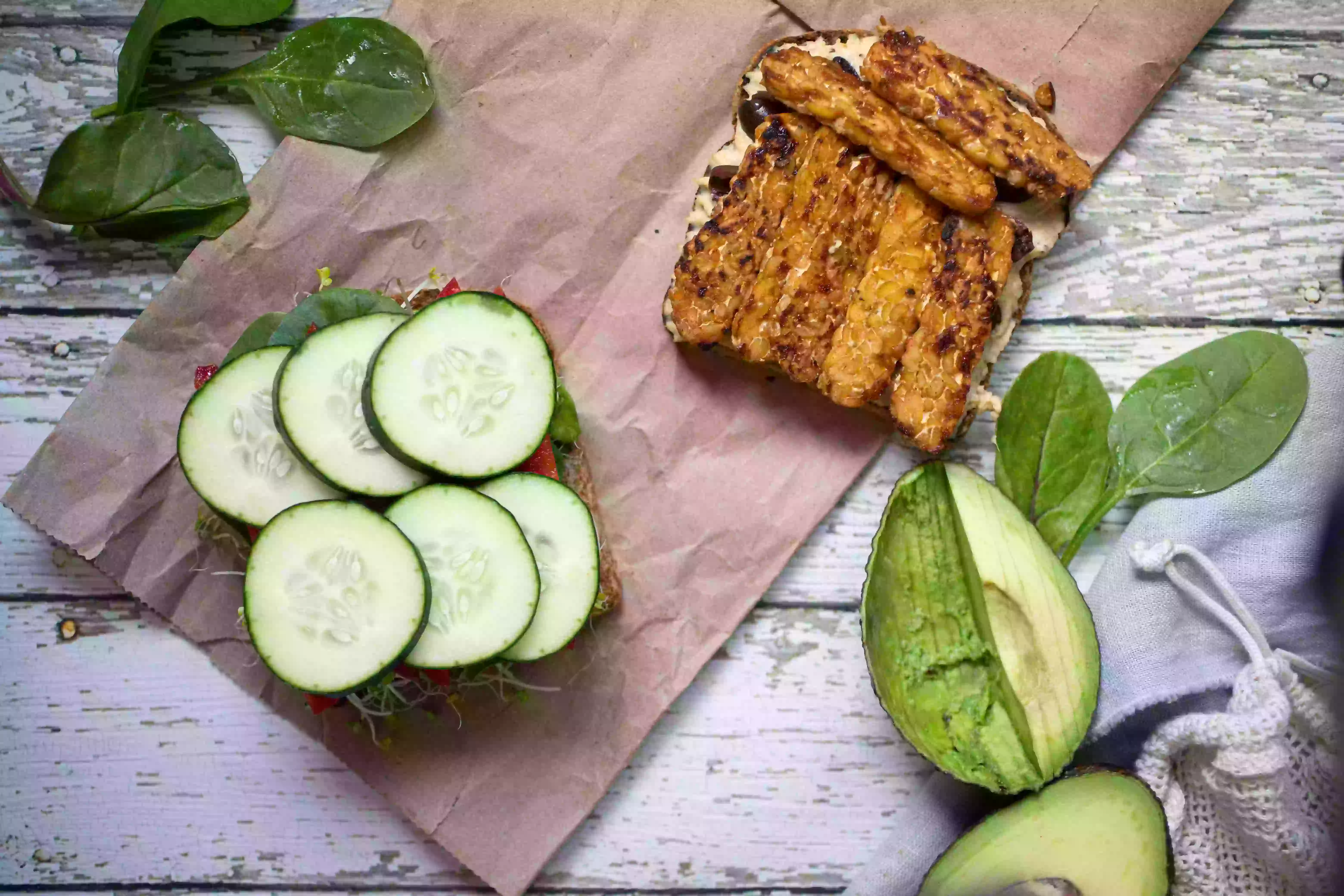Ginger Kitchari with Pear & Mint Salad
Vegan / HCLF / High Protein / Gluten-Free
Have you ever eaten a dish, and–afterwards–felt that you, at long last, finally understood what it meant to feel “well”? That’s what Kitchari does for me. Every time I eat it, I feel energetic, light, and totally satiated. It’s my ultimate wellness food. It’s a little sweet, heavy on the ginger, easy on the digestive system, and oh-so-delicious. Eat it with a super fresh, minty salad for a lovely variety in texture and flavor. Your tastebuds and your body will thank you 🙂
This is the dish that has helped me to redefine what it means to feel “well.” I hope you love it as much as we do.
So, What is Kitchari?
Kitchari is a one-pot curry made with easily digested foods that is intended to give your digestive system a break, heal your gut, and leave you feeling balanced and satiated. Variations of it have been eaten for thousands of years all over India both to promote healing and to provide cheap, easy nourishment.
This variation, a ginger kitchari, is a lightly sweet, subtly spiced, ginger-forward curry made with red lentils (or mung bean dhal if you can find it) and naturally sweetened with diced sweet potato (which we use in this recipe as a healthier starch in place of the traditional white rice). A mix of finely diced vegetables (I use spinach and zucchini) add color and nutrients without being overwhelming.
When Should You Make Kitchari?
- Prepare a double batch to eat over the course of a few days when you’re feeling sick and need both 1) the break from cooking and 2) some wholesome, nutrition-packed food to support your recovery.
- Use kitchari to hit the “reset” button, and gently re-introduce (or introduce) your body to whole, plant-based foods.
- Make a big batch of kitchari for easy, low-dish-load meal prep anytime life gets busy! (Pair it with a different steamed green, cold salad, herb garnish, and/or fermented vegetable to change it up each day).
- Make it anytime you want delicious, cheap, satiating, low-fat, high protein, plant-based bowl of wellness that comes together in under an hour in a single pot. (think I got enough adjectives in there??)
The spice mix plays a nourishing role in this dish as well.
Fresh Ginger – fresh ginger lifts and invigorates the flavor in an otherwise dense stew. It’s the flavor star of this dish. If at all possible, use fresh ginger. Ginger also promotes healthy digestion, and helps reduce inflammation.
Ground Coriander – Corriander’s sweet, fragrant flavor pairs perfectly with the flavors of ginger, legumes, and sweet potato. Coriander has also been shown in animal studies to reduce blood sugar and increase inulin. The spice also contains the antioxidants terpinene, quercetin, and tocopherols which have been shown to fight inflammation, protect against cancer and neurodegeneration, and improve immunity.
Ground Cumin – A touch of cumin adds a bitter note that contrasts nicely with the sweetness of the sweet potatoes. It also complements the coriander flavor. Cumin also contains apigenin and luteolin—antioxidants which prevent free radicals from successfully attacking healthy cells. Cumin also has shown some potential in animal studies for preventing cancer. Finally, cumin has also been shown to help control blood sugar, mitigate inflammation, and exert antibacterial effects.
Mustard Seeds – Whole mustard seeds add depth to the flavor profile. Don’t worry though, the curry won’t taste like mustard 🙂 I like to toast these, along with the fennel seeds, in a tiny bit of coconut oil. The coconut oil becomes infused with the spices, and the fat helps the body absorb all the nutrients from the stew. Mustard seeds also have antioxidant and anti-inflammatory properties and contain selenium which helps strengthen nails, teeth, and bones.
Fennel Seeds – Whole fennel seeds provide the tiniest fresh, fennel-flavored burst that, like ginger, helps to provide a little “pop” in this dish and elevate the heavier flavors. Like most of the other spices included in this kitchari, fennel seeds contain antioxidants and may have anti-inflammatory and antibacterial effects. They also contain trace nutrients like vitamin C (which promotes immune health, tissue repair, and collagen synthesis), manganese, potassium, magnesium, and calcium.
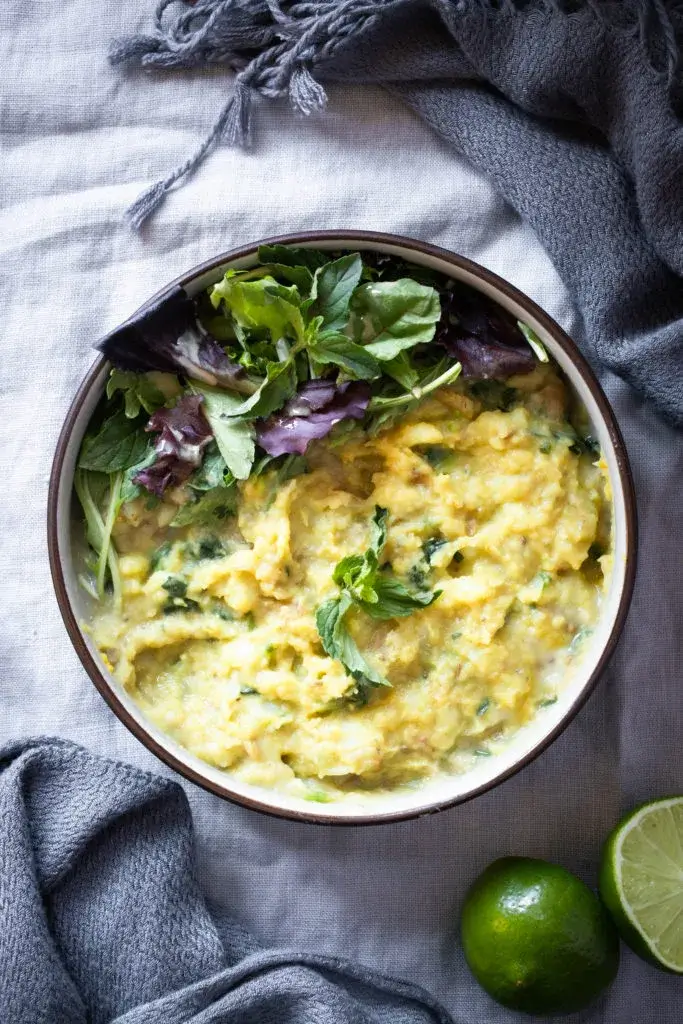
How to Eat Kitchari
Kitchari is meant to be a nutritionally complete one-pot meal. It provides all three macronutrients (carbs, fats, and protein), lots of fiber, and micronutrients from a variety of vegetables. You can eat it just as it is!
Even so, I usually can’t resist some extra green veggies–whatever you have laying around is good.
- Steamed broccolini or green beans with garlic make nice warm pairings.
- Cold salads provide the best contrast though. My current favorite salad is a mix of spring greens, micro greens, mint leaves, diced pears, and cucumbers dressed with a mix of lime juice, tahini, and honey. (I dropped the recipe for that just below the kitchari recipe if you’re interested)
- Fermented vegetables also complement kitchari well. We use sauerkraut or beet kraut for a probiotic boost. Keep in mind that fermented veggies contain a good amount of salt though, so you may want to leave your kitchari less salted if pairing it with fermented vegetables.
Ginger Kitchari
Pre-heat a large, heavy pot over medium heat.
When the pot is warm, add the whole mustard and fennel seeds to the dry pot. Toast for 1 min. Reduce heat to low, and add the coconut oil. Toast the whole spices for another 30 seconds in the oil.
Add water, red lentils, diced sweet potato, and bay leaves. Cover, and simmer for 40 minutes. While it simmers, zest in the fresh ginger.
After 40 minutes, take the lid off to let the stew thicken a bit. Add the diced zucchini, cumin, and coriander. Season with salt and pepper to taste. Simmer another 10-20 minutes or until it reaches a thick, almost "mushy" consistency.
Add the greens.
If using kale, add the kale while the stove is still on. Simmer for a couple minutes or until just tender.
If using spinach, turn off the heat, then stir in the spinach.
Serve with fresh salad. (I've listed the recipe for my current favorite Pear & Mint Salad to pair with this Kitchari below)
---
Serving Size ~ 1 cup
Servings 8
- Amount Per Serving
- Calories 163
- % Daily Value *
- Total Fat 1g2%
- Cholesterol 0mg
- Potassium 397mg12%
- Total Carbohydrate 32g11%
- Dietary Fiber 6g24%
- Sugars 6g
- Protein 9g18%
- Vitamin A 315%
- Vitamin C 26%
- Calcium 31%
- Iron 15%
* Percent Daily Values are based on a 2,000 calorie diet. Your daily value may be higher or lower depending on your calorie needs.
Ingredients
Directions
Pre-heat a large, heavy pot over medium heat.
When the pot is warm, add the whole mustard and fennel seeds to the dry pot. Toast for 1 min. Reduce heat to low, and add the coconut oil. Toast the whole spices for another 30 seconds in the oil.
Add water, red lentils, diced sweet potato, and bay leaves. Cover, and simmer for 40 minutes. While it simmers, zest in the fresh ginger.
After 40 minutes, take the lid off to let the stew thicken a bit. Add the diced zucchini, cumin, and coriander. Season with salt and pepper to taste. Simmer another 10-20 minutes or until it reaches a thick, almost "mushy" consistency.
Add the greens.
If using kale, add the kale while the stove is still on. Simmer for a couple minutes or until just tender.
If using spinach, turn off the heat, then stir in the spinach.
Serve with fresh salad. (I've listed the recipe for my current favorite Pear & Mint Salad to pair with this Kitchari below)
Pear & Mint Salad
In the bottom of a large salad bowl, mix the dressing ingredients. Then add the salad ingredients and toss well. Add salt to taste if desired.
---
Serving Size small salad
Servings 4
- Amount Per Serving
- Calories 81
- % Daily Value *
- Total Fat 2g4%
- Saturated Fat 0g
- Cholesterol 0mg
- Potassium 117mg4%
- Total Carbohydrate 16g6%
- Dietary Fiber 3g12%
- Sugars 10g
- Protein 2g4%
- Vitamin A 57%
- Vitamin C 27%
- Calcium 15%
- Iron 6%
* Percent Daily Values are based on a 2,000 calorie diet. Your daily value may be higher or lower depending on your calorie needs.
Ingredients
Directions
In the bottom of a large salad bowl, mix the dressing ingredients. Then add the salad ingredients and toss well. Add salt to taste if desired.
